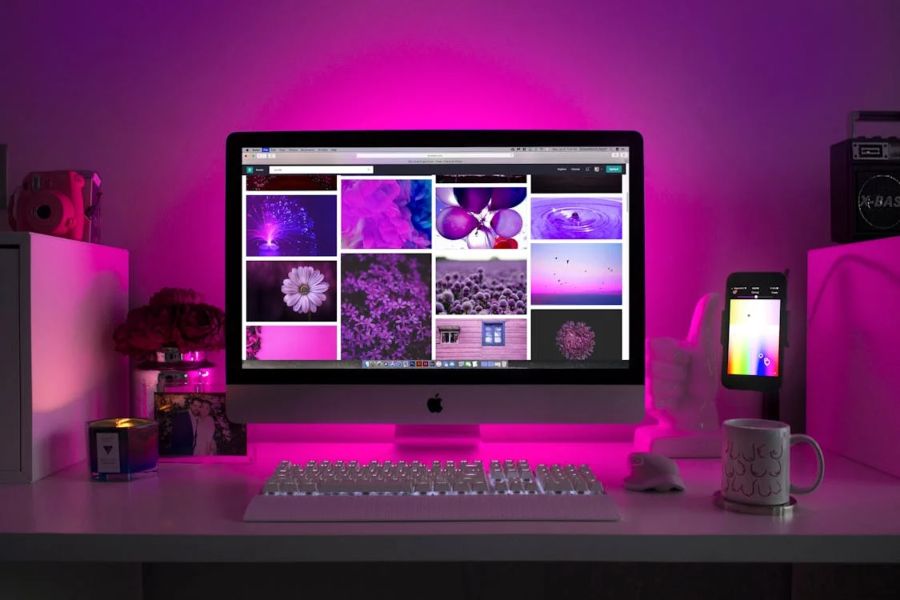How to Use a Color Palette in Web Design: Tips for Visual Appeal

Color is one of the most essential elements in web design. The right color palette can influence user behavior, evoke emotions, and establish your brand identity. Using a color palette in web design is crucial for creating websites that are not only aesthetically pleasing but also user-friendly. A well-thought-out color scheme can enhance the overall experience, improve accessibility, and help guide users through your site.
Selecting the right colors can be a daunting task, but with a structured approach, it becomes much easier. In this article, we will explore the fundamentals of choosing the right color palette, how colors affect user experience, and the best practices for incorporating them into your web design projects. Whether you’re designing a personal blog or a corporate website, learning how to use a color palette effectively can elevate your design to new heights.
The Role of Color in Effective Web Design
Color is a fundamental element in web design, serving far beyond aesthetics. It’s essential for enhancing user experience and ensuring your site is functional. The psychology of color plays a significant role in influencing how users perceive your site and interact with its content. For instance, blue tones can evoke trust and calmness, making them ideal for financial or healthcare websites, while red can instill urgency and excitement, often used for calls to action or promotions.
When selecting a color palette, it’s crucial to consider how different colors interact with each other. Harmonious color schemes create a sense of unity and professionalism across the website, while contrasting colors can draw attention to key elements like buttons, links, or CTAs. Consistency in your color choices throughout the site helps with brand recognition and provides a cohesive user experience.
Moreover, a well-thought-out color palette also enhances accessibility. By ensuring high contrast between text and background colors, you make your website more inclusive, catering to users with visual impairments and improving overall readability.
How to Choose the Right Color Palette for Your Website?
Choosing the right color palette is crucial for creating a practical and visually appealing website. The right colors can enhance user experience, reinforce brand identity, and improve accessibility.
Start with Your Brand Identity
When choosing a color palette for your website, start with your brand’s identity. The colors you choose should reflect the personality and core values of your brand. For example, a financial institution might lean towards blues and greens to evoke trust and stability. At the same time, a creative agency may opt for vibrant and bold colors to express creativity and innovation.
Use the 60-30-10 Rule
The 60-30-10 rule is a popular guideline in color selection. According to this rule, 60% of your website’s colors should be the dominant color, typically used for backgrounds or large sections. The secondary color, which makes up 30%, is used for essential content areas, while the remaining 10% is the accent color, typically reserved for calls to action, buttons, and other key elements.
Consider Color Contrast
It’s essential to ensure sufficient contrast between your text and background colors for readability. Good contrast not only enhances visual appeal but also ensures that your website is accessible to all users, including those with visual impairments or color blindness.
Test for Accessibility
To ensure your color choices meet accessibility standards, always test your palette with tools like the WebAIM Color Contrast Checker. This step ensures that your design is inclusive and user-friendly.
How Colors Influence User Behavior?
Colors do more than enhance the aesthetics of your website—they can guide user behavior. The psychology of color can influence how users perceive your website and interact with its content.
- Red: Known for stimulating energy, urgency, and excitement, red is often used for sale banners or calls to action.
- Blue: Associated with trust, calm, and professionalism, blue is often used by financial or healthcare websites.
- Green: Represents growth, tranquility, and eco-friendliness, making it ideal for environmental or wellness websites.
- Yellow: Known for stimulating optimism and happiness, yellow is an excellent choice for promoting fun and positivity.
In addition to influencing user emotions, color can also enhance the functionality of interactive elements. For example, if your website includes a KPH to MPH Converter, using a contrasting color for the input fields or button can make it more visible and inviting, increasing user interaction with the tool.
How to Implement a Color Palette in Web Design?
Once you’ve chosen the right color palette, it’s time to implement it effectively. Here’s how to do it:
- Maintain Consistency Across All Pages: Consistency is key to creating a cohesive, professional look across your site. Ensure that your primary color is used consistently throughout, with secondary and accent colors strategically placed to highlight important sections.
- Use Color to Guide User Interaction: Colors can be used to draw attention to critical areas like call-to-action buttons, navigation bars, and links. To make these elements stand out, use high-contrast color combinations, such as a bright accent color on a dark background, to ensure they capture user attention.
- Background Colors and Text: Ensure that your background color complements the text for readability. Avoid overly saturated colors for backgrounds and opt for more subtle, neutral tones like off-white, gray, or soft pastels to maintain a clean, accessible look.
- Highlight Key Elements: Use your accent colors to highlight essential elements on the page, such as buttons, banners, or interactive features. This helps draw users’ attention, encouraging them to engage with key content and take action.
Best Practices for Using Color Palettes in Web Design
Choosing and using a color palette effectively is key to creating a visually appealing and functional website. By following best practices, you can ensure that your website’s color scheme enhances the user experience and supports your design goals.
Limit Your Palette
When creating a color palette for your website, it’s essential to keep it simple. Stick to a limited palette—usually two to four colors. This helps maintain a clean, cohesive design while ensuring that your key elements, such as call-to-action buttons or headlines, stand out. A limited color palette ensures that your design is not overwhelming and that the user experience remains intuitive.
Use Web-Safe Colors
Web-safe colors are essential to ensure your website looks great across different devices and screen types. These colors are specifically chosen to render consistently across various browsers and devices. Using web-safe colors prevents distortion and ensures your color scheme remains uniform, regardless of the user’s device or screen settings.
Avoid Overusing Bright Colors
While bright colors can be eye-catching, they should be used sparingly. Overuse of bright colors can create visual chaos and make your website appear unprofessional. Bright colors are best reserved for emphasis, such as highlighting buttons or key content, rather than being the dominant color on your page.
Test Your Palette Across Devices
Before finalizing your color choices, test them across multiple devices to ensure that they display consistently. This ensures that your website’s colors maintain their effectiveness, look cohesive, and provide a great experience on all screen types.
Final Thoughts
In conclusion, using a color palette in web design is essential for creating websites that engage users and enhance their experience. By selecting a color palette that aligns with your brand and guides user behavior, you can build a visually appealing site that resonates with your audience. A well-designed color scheme doesn’t just improve aesthetics; it also boosts functionality, making navigation easier and encouraging user interaction. Additionally, ensuring your colors are accessible and consistent across devices will make your site more inclusive, offering a seamless user experience. With the right approach to color, you can create a website that’s both beautiful and effective.
FAQ’s
How do I choose the right color palette for my website?
Start by considering your brand’s identity, then use tools like Adobe Color or Coolors to explore complementary colors. Stick to the 60-30-10 rule for a balanced design.
Can I use more than four colors in my website’s color palette?
While you can use more than four colors, it’s generally recommended to limit your palette to two to four primary colors for consistency and visual harmony.
How does color affect user experience?
Colors can influence emotions, perceptions, and actions. For example, blue promotes trust, while red creates urgency, impacting how users interact with your website.
What is the 60-30-10 rule?
The 60-30-10 rule suggests using 60% of a dominant color, 30% of a secondary color, and 10% of an accent color for balance and harmony in your design.
How do I ensure my color palette is accessible?
Use high-contrast colors for text and background, and test your palette with tools like the WebAIM Color Contrast Checker to ensure readability for all users.
